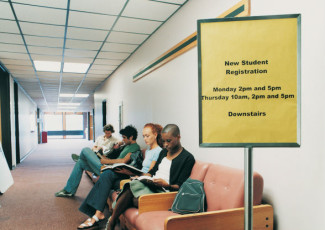Online Portfolio Helps Students Plan for Success
By Emily Rogan
October 9, 2014
Columbus State Community College introduces web-based platform to improve on-campus communication and help students prepare for the future.
In an effort to increase on-campus student involvement, administrators at Columbus State Community College in Ohio have committed to a three-year pilot with OrgSync, an online resource that allows students to track their co-curricular activities, find out information about clubs and organizations on campus, and create an e-portfolio of their combined academic and volunteer experiences that can be used when applying for internships and jobs.
“We want to make sure students have resources and learning opportunities at their fingertips,” says Renee Hill, dean of student life at the college. “Research says if you actively engage students on campus, their success rate increases. So this is a good retention tool.”
OrgSync is a virtual community that streamlines essential resources for students into a portal, accessible via desktop computer or mobile device. It functions as a hub for all student life on campus; currently there are 40 active portals that provide information for students about the college’s 35 clubs and service organizations.
Administrators say specific student groups, such as honor students or first-generation students, can use the portal to connect with and energize members. Students also have access to a campus calendar of events and systemwide announcements to help them stay abreast of the latest happenings on campus.
The new portal is one example of a trend at U.S. community colleges to build or rollout technology designed to help students better manage their academic and career goals. Other colleges, such as Elgin Community College in Illinois and Spartanburg College in South Carolina, offer similar tools.
Individually, students can use these resources to store up-to-date transcripts of their educational and co-curricular activities — a potentially useful feature should they decide to transfer to another college or apply for an internship or job.
“It’s a tool that gives students something that’s well-documented that they can share with educational institutions and employers to show how they were involved and engaged,” Hill says.
At Columbus State, the resource also helps students research available internship and career opportunities. In turn, the technology provides college administrators with student feedback and input that is used to improve the quality of programs and communication at the college.
Though it just launched in September, Hill says the portal has been well received by faculty members and internal departments. “Some classes that have learning services associated with them use this vehicle to post opportunities and keep track of them,” she explains.
In addition to keeping students connected to the campus, administrators say the resource should empower students to take control of personal academic and career pursuits.
How do you keep your students active and engaged on campus? Share your ideas in the Comments.







